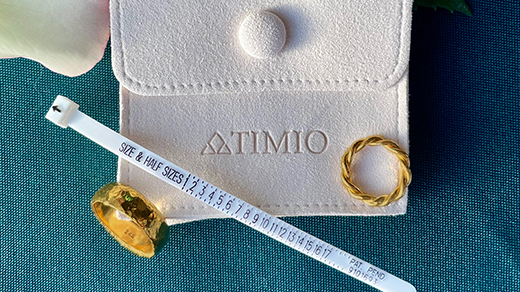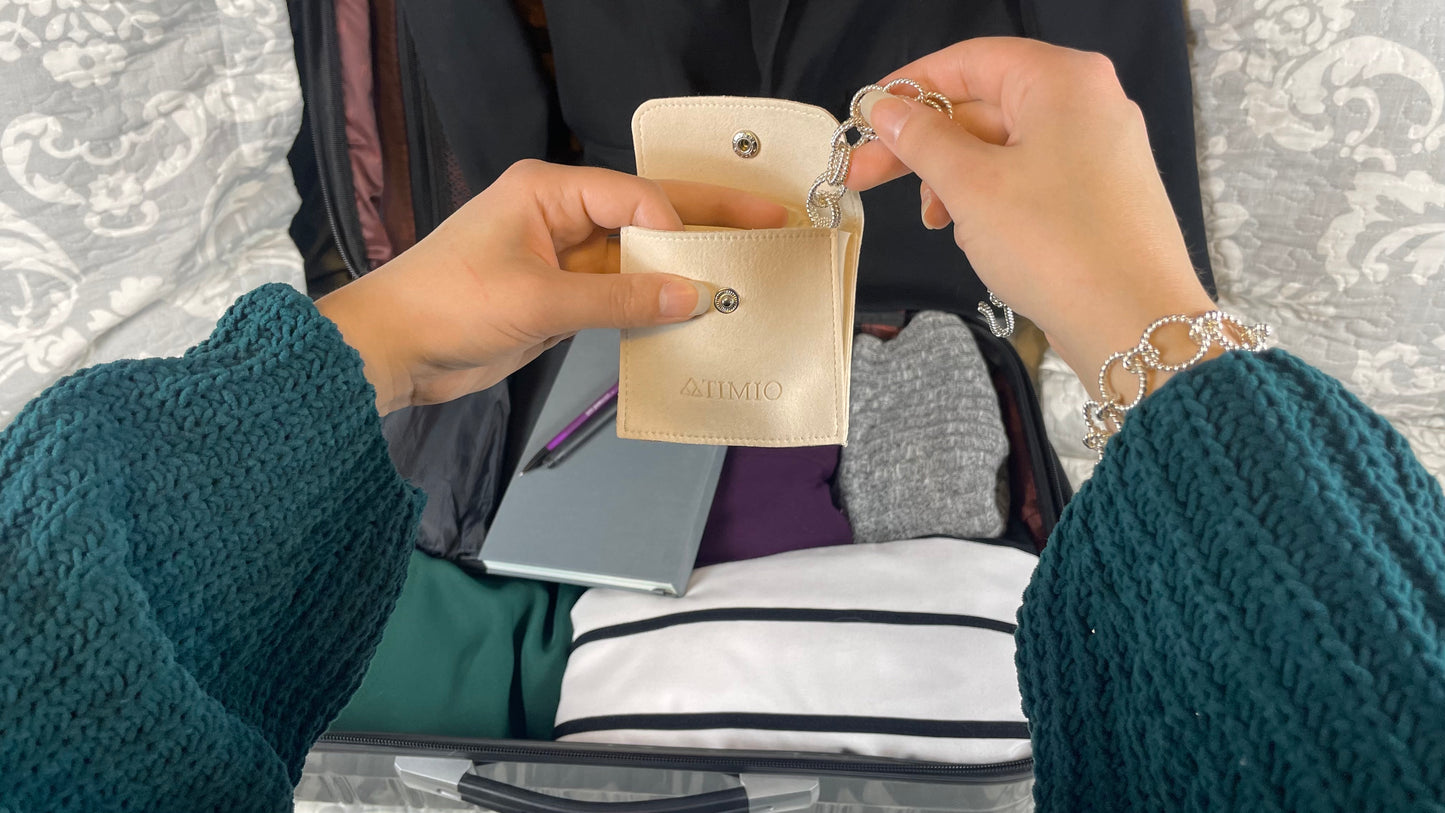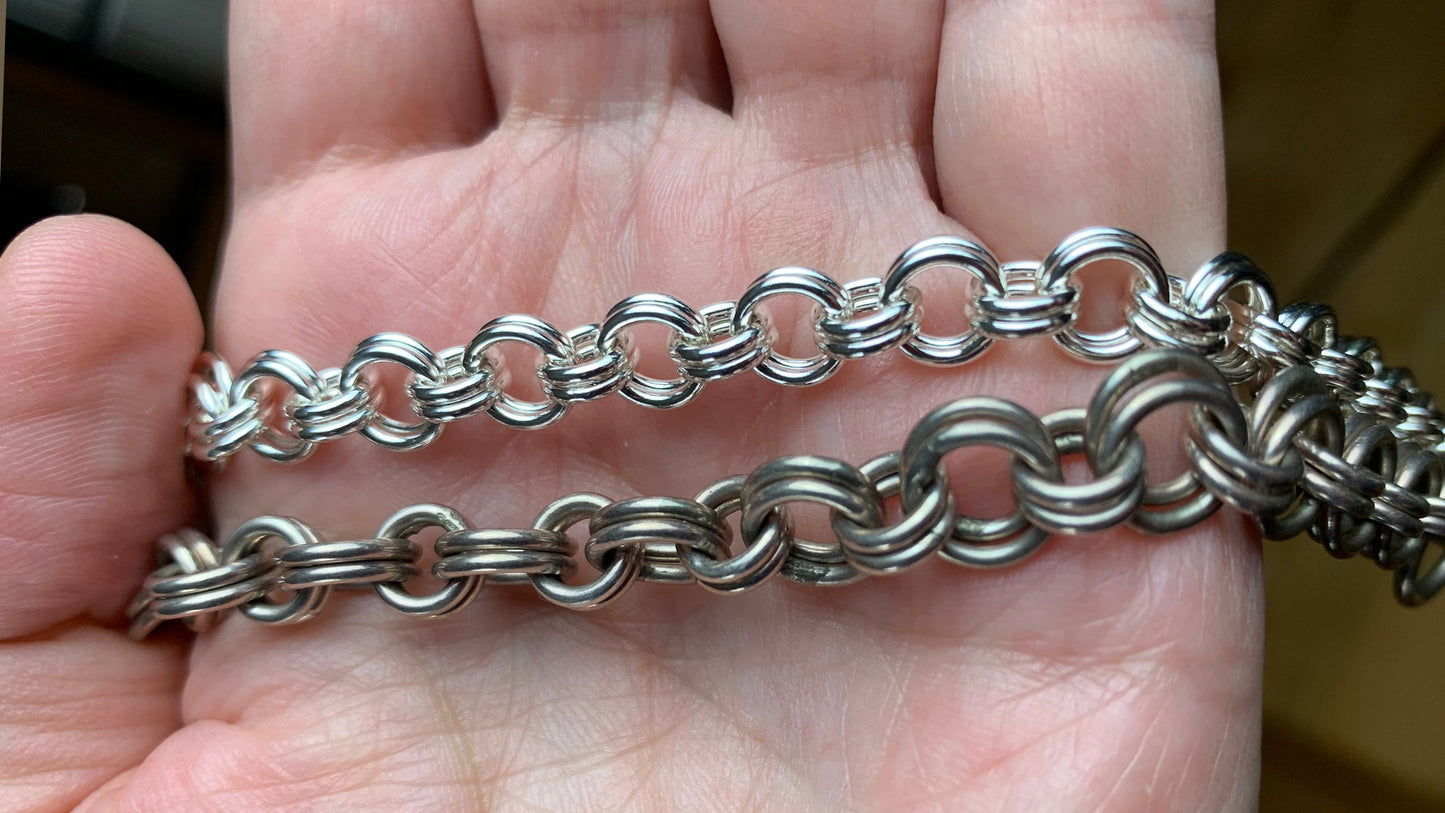
When buying jewelry you’ll encounter online shops, jewelry retailers, and craftspeople describing the weight of precious gems as “carats” while gold is measured in “karats”. Perhaps this stirs a passing thought of “I wonder why they’re one letter different?” or “I haven’t heard of this measurement before, where does it come from?” This is what we are here to help answer today.
Where Does the Term Carat Originate?
There are two instances in history where the weight of gold is associated with the unit 24 but first you must understand the terms “carat” and “karat”.

Throughout our research we’ve not been able to find even a rough date that the term “carat” begins being used, but it is known that it originates in ancient Greece and Rome, among other countries participating in trade across the region. Uniform measurements were difficult to establish and communicate between different nations, yet since most economies were centered around agriculture, it was common for farmers, traders, and merchants to have carob seeds. These seeds develop in a pod (from a tree) and once removed they appear to be rather uniform in shape and weight. Since carob seeds were commonly cultivated, eaten, and used to feed livestock, they were also used by early traders to weigh gems and precious goods as they traveled. Though we now know, and can measure, that carob seeds are not always the same weight and standard weight measures varied from trader to trader, country to country because of these minute variations.
Many proposed different units of measurement for precious stones and metals, but it wasn’t until the Fourth General Conference on Weights and Measures which in 1907 when the 200 mg metric carat was proposed and decided on. It wasn’t until 1913 that the United States of America adopted the 200 mg carat weight and other countries took years to adopt it as well. And thus the “carat” and “karat” as we know them today were formally established, to standardize global trade of precious stones and metals.
What Makes “Karat” Different From “Carat”?
In all honesty, the term “karat” is derived from “carat”. Karat is only used to describe the purity of gold in the USA. Other countries around the world use “carat” to describe both the weight of precious stones and the purity of precious metals.
Why Is A Gold Karat Purity Expressed As 24 Units?
This is another research tangent that we’ll simplify for the sake of answering your question concisely. We’ll list some of the research and resource links at the end in case you care to dig further.

To fight inflation, Constantine I established the minting and circulation of the pure gold solidus coin, which weighed 24 carats (equal to 24 carob seeds during the ancient Byzantine empire). This coin was used for centuries, and its purity meant it retained value even through the rise and fall of empires.
The second instance that appeared in our research is the introduction of the German medieval gold coin called the “mark” which apparently weighed 24 carats.
Though when researching these coins, we could not find examples of these coins that weighed 24 carats or 4.8 grams. These coins were made of 90% gold, making them 21 karats in purity. Though this was still before carat weight was standardized, so this could have been weighed as 24 carats by their measures at that time and less directly associated with the coin’s gold purity.
Overall, the Timio team gives credit to the solidus coin establishing the measure of gold’s purity, since it was the more documented and older instance of pure gold being associated with 24 as a measure.
What else would you like the Timio team to explore and discuss? Let us know by sending in questions to our social media accounts, @Timio24K, on Instagram, Facebook, X (formerly Twitter), and YouTube.






